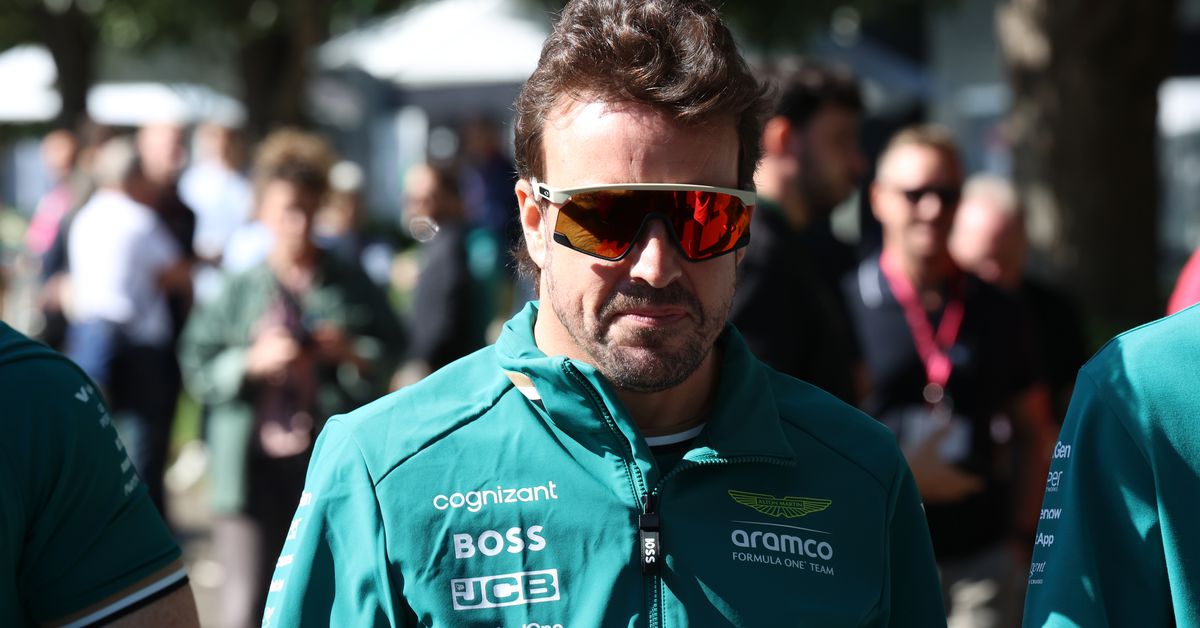In the closing stages of the 2024 Formula 1 Australian Grand Prix, the last bit of drama left to settle was the fight between Fernando Alonso and George Russell for sixth place. The Mercedes driver was chasing down the veteran on a fresher set of tires, but suddenly that fight appeared over, as Russell skidded into the gravel and then found himself stopped on the track, his W15 flipped on its side as the driver frantically called for a red flag:
However, the matter was far from settled.
Both drivers were summoned to meet with race stewards to determine if Alonso played any role in Russell’s crash. After speaking with both drivers and reviewing telemetry data, stewards determined that the cars never came into contact.
Yet Russell was hit with a drive-through penalty, which because the race had been finished was converted to a 20-second penalty. When that penalty was applied, Alonso dropped from sixth to eighth, and both Lance Stroll and Yuki Tsunoda were promoted a single place each as a result.
The question is: Why? Why was Alonso given this penalty despite there being no contact between the cars?
The answer, according to the stewards, lies in a strict reading of Article 33.4 of the Sporting Regulations. That section reads as follows: “At no time may a car be driven unnecessarily slowly, erratically or in a manner which could be deemed potentially dangerous to other drivers or any other person.”
When the stewards spoke with Alonso, the Aston Martin driver “explained to the stewards that he intended to approach Turn 6 differently, lifting earlier, and with less speed into the corner, to get a better exit.” From Russell’s point of view, he stated that “from his perspective, Alonso’s [maneuver] was erratic, took him by surprised, and caused him to close distance unusually fast, and with the resulting lower downforce at the apex of the corner, he lost control and crashed at the exit of the corner.”
Stewards then reviewed telemetry data, which showed that Alonso lifted off the throttle “slightly more than 100m earlier than he ever had going into that corner during the race. He also braked very slightly at a point that he did not usually brake (although the amount of brake was so slight that it was not the main reason for his car slowing) and he downshifted at a point he never usually downshifted.” Following that sequence, Alonso then “upshifted again, and accelerated to the corner before lifting [off the throttle] again to make the corner.”
Here is the telemetry data in question, from F1-Tempo. The previous lap is in white, with the lap in question in green. The white vertical line denotes roughly when the incident occurred:
:no_upscale()/cdn.vox-cdn.com/uploads/chorus_asset/file/25352493/Screenshot_2024_03_24_at_11.42.21_AM.png)
Here is the relevant throttle and braking data as well:
:no_upscale()/cdn.vox-cdn.com/uploads/chorus_asset/file/25352494/Screenshot_2024_03_24_at_11.43.42_AM.png)
When asked about the sequence described above, Alonso told the stewards that his plan was to slow earlier, but he got the maneuver “slightly wrong,” and had to take extra steps to get back up to speed.
Stewards noted that the maneuver by Alonso “created a considerable and unusual closing speed between the cars.”
The stewards then tried to determine whether Alonso violated Article 33.4 of the Sporting Regulations, as noted above. First, the stewards noted that the “consequences of the crash” are not a consideration, and they also noted that the “do not have sufficient information to determine whether Alonso’s [maneuver] was intended to cause Russell problems, or whether as he stated to the stewards that he was simply trying to get a better exit.”
Race officials then noted that Alonso does have a right to try a different approach to that corner, and he should not be held responsible for the dirty air “that ultimately caused the incident.”
However, Article 33.4 of the Sporting Regulations does not require those findings, but rather a finding that Alonso operated his AMR24 “unnecessarily slowly, erratically or in a manner which could be deemed potentially dangerous to other drivers or any other person.” In their view, in looking at the available data, and from his own words, Alonso did violate that regulation.
As the stewards’ report noted, Alonso did “choose to do something, with whatever intent, that was extraordinary, i.e. lifting, braking, downshifting, and all the other elements of the maneuver over 100m earlier than previously, and much greater than was needed to simply slow earlier for the corner.” Thus, in their determination, Alonso “drove in a manner that was at the very least ‘potentially dangerous’ given the very high speed nature of that point of the track.”
While the standard penalty for this breach was set to ten seconds, stewards also reported that when there are aggravating circumstances, a “drive through penalty” can be imposed. That is the penalty the stewards settled upon, however, since this was coming after the race, it was converted to a 20-second penalty.
Three penalty points were also added to Alonso’s Super License. Alonso entered the season without any penalty points on his Super License, and now has these three which will remain for one calendar year.
The incident between Russell and Alonso reminded many of an incident between the Aston Martin driver and Lewis Hamilton at last season’s Abu Dhabi Grand Prix, where Hamilton accused Alonso of “brake testing” him.
Alonso was not penalized for that incident, but this time the stewards had a much different view.

